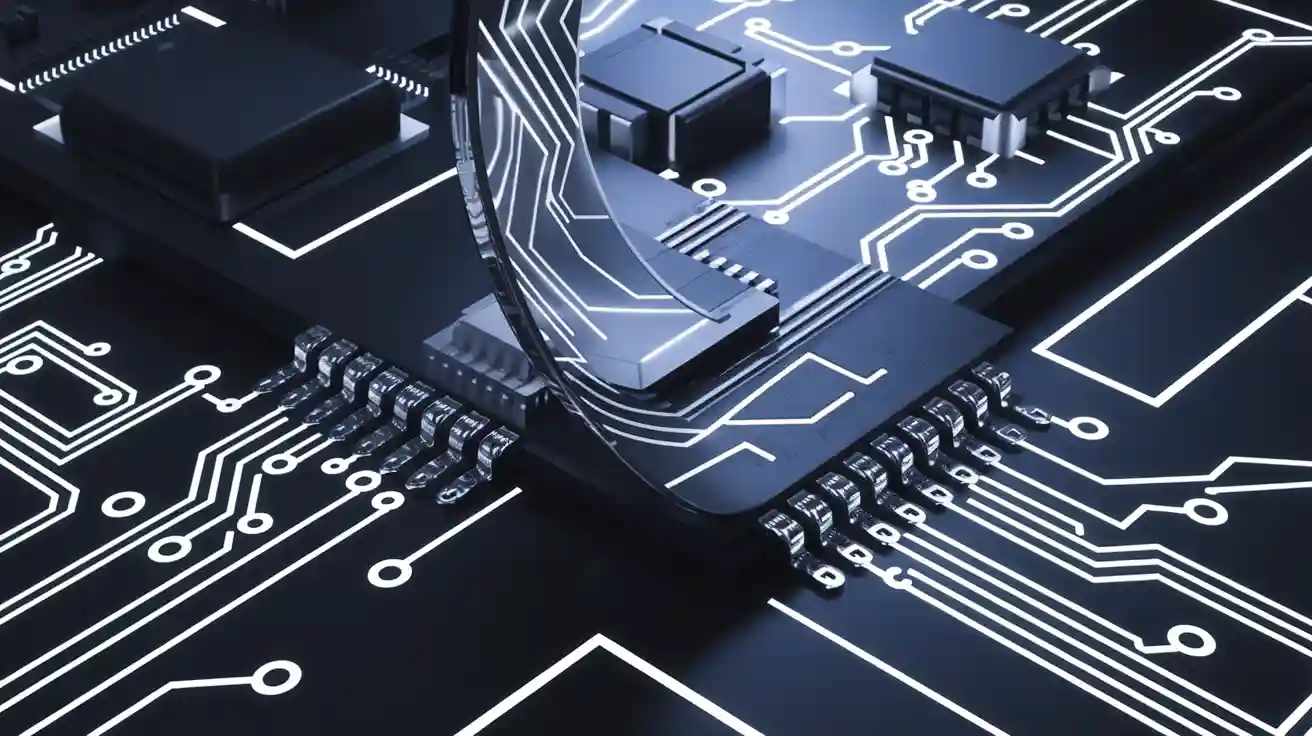Most converter pcb designs use both hard and soft pcb types. Engineers pick both types to make circuits work better and last longer. Hard pcbs give strong support and help control heat in the circuit. Soft pcbs let the circuit bend and fit into small spaces. This way, converter pcb modules can do step-up and step-down jobs with better electrical results. Many new pcb layouts use these features to make them tougher and work better.
Tip: Using both hard and soft pcbs can keep the circuit safe from shaking and damage.
Key Takeaways
- Mixing hard and soft PCBs makes converter circuits stronger. It also makes them more flexible. They handle heat better too. Hard PCBs give strong support. They help keep parts cool. Soft PCBs let the circuit bend. They fit into small spaces. Using both types helps converters work well. They do well in tough places like cars and factories. This protects against shaking and damage. Rigid-flex PCBs have hard and soft layers. They make small, reliable modules. These save space and cut down on wiring. Many people worry about cost and complexity. They also worry about durability. These worries are often wrong. Mixing PCB types can lower costs. It helps circuits last longer.
Converter PCB Types
Hard (Rigid) PCBs
Hard PCBs are used in many converter pcb designs. These boards are made from solid stuff that does not bend. Engineers use rigid-flex pcbs because they are strong and steady. The hard part holds heavy pieces and keeps the circuit safe. Rigid-flex pcbs help control heat and support step-up and step-down jobs. The solid board lets parts be placed exactly, which helps the circuit work better.
Note: Rigid-flex pcbs are found in cars and factories. They do not shake much and last a long time.
A rigid pcb can take high heat and strong hits. This makes it good for the main part of the circuit. Rigid-flex pcbs also keep signals clear, so the circuit does not make mistakes.
Soft (Flexible) PCBs
Soft pcbs, or flexible pcbs, can bend and twist to fit small spaces. The flexible part links different areas of the converter pcb. Rigid-flex pcbs mix hard and soft layers, so the pcb can change shape. Flexible pcbs let engineers make small converter modules.
- Flexible pcbs stop connections from breaking when the circuit moves.
- Rigid-flex pcbs help join step-up and step-down transformer parts.
Flexible pcbs spread heat away from parts that can get too hot. The flexible part also takes in shocks, so the circuit stays safe when it moves. Rigid-flex pcbs are used in designs with both hard and soft layers for better results.
Tip: Rigid-flex pcbs make converter designs work better and last longer.
Engineers pick flexible pcbs for parts that need to bend or move. Rigid-flex pcbs help make new layouts and fix space problems in converter pcb designs.
Soft and Hard Board PCBs Design

Mixing soft and hard PCBs makes converter pcb designs strong. This mix helps engineers build circuits that work really well. Each pcb type has its own good points. Hard boards are tough and hold parts steady. Flexible boards let the circuit bend and fit in small spots. Using both types helps converters work better and last longer, even in rough places.
Buck Converter FPC Design
Buck converters make voltage go down in a circuit. Engineers use both soft and hard boards to make these work better. The hard pcb holds big parts and keeps them cool. The flexible pcb links parts and lets the circuit fit in tight spaces. This mix keeps the circuit steady and helps with heat. The flexible part also takes in bumps, so the converter works when it moves. Using both types keeps the buck converter working and safe.
Boost Converter FPC Design
Boost converters make voltage go up in a circuit. Using both soft and hard boards helps these work in many places. The hard pcb holds main parts and keeps signals clear. The flexible pcb links sections and lets the converter fit in small modules. This mix helps signals stay strong and keeps heat away. The flexible part spreads heat and keeps the circuit safe. Engineers use this way to get the best from boost converters.
Transformer Specific Application Design Requirements
Transformers in converter circuits need special care. Using both soft and hard boards meets these needs. Hard pcbs give strong support and help with heat. Flexible pcbs connect the transformer and let the circuit bend. This mix keeps signals clean and cuts down noise. The design also keeps the circuit safe from shaking. Engineers use this to make sure transformers work well and last long.
BESTFPC Designed Automotive Convert PCB FPC Board
BESTFPC uses both soft and hard boards in car converter pcb boards. These boards must handle heat, shaking, and small spaces. The hard pcb holds heavy parts and keeps them cool. The flexible pcb lets the board fit in tight spots and links moving parts. This mix gives the board strength and lets it bend. The design helps the converter pcb work in cars for years. Engineers trust this way to make car boards work well.
Tip: Mixing soft and hard boards helps engineers fix space, heat, and shaking problems in converter pcb projects.
| Feature | Hard PCB | Flexible PCB | Soft and Hard Combination Design |
|---|---|---|---|
| Mechanical Strength | High | Medium | High |
| Flexibility | Low | High | High |
| Thermal Management | Good | Good | Excellent |
| Signal Integrity | Excellent | Good | Excellent |
| Maximum Functionality | Limited | Limited | Achieved |
Rigid-Flex PCBs in Converters
Rigid-flex PCBs are very important in converter pcb design. Engineers use these boards to fix many problems in new electronics. Mixing rigid and flexible circuits gives designers more ways to make small and strong converter modules. Rigid-flex circuit boards help with heat, stop shaking, and fit in tight spots. These things make them common in cars, hospitals, and the military.
Compact Converter Modules
Engineers must often put converter circuits in small spaces. Rigid-flex PCBs let them make small modules by using rigid parts for heavy pieces and flexible parts for links. The flexible parts can bend and twist, so the converter pcb fits in tiny devices. Rigid-flex circuit boards mean fewer connectors and less extra wiring. This design can make a converter module half as big and almost two-thirds lighter. Multi-layer rigid-flex circuit boards let engineers stack circuits without making the device thick. The rigid parts hold things like transformers and capacitors, while the flexible parts connect different spots. This way, the module stays strong and lasts longer.
Tip: Small converter modules with rigid-flex PCBs work great in electric cars and portable medical tools.
Hybrid Architectures
Hybrid architectures use both rigid-flex PCBs and other materials to make converters better. Engineers mix PCB and direct-bonded-copper bases to help with electrical work and heat. This helps fix problems from different materials growing at different speeds. If materials grow too much, the circuit can crack or break. Liquid-metal packaging in hybrid modules helps take in heat strain and keeps connections safe. Flexible PCBs with low Young’s modulus soak up stress when heating and cooling. This lowers the chance of damage and helps the converter pcb last longer. Making rigid-flex circuit boards for hybrid designs lets engineers build strong converters for high power and hard jobs. Mixing rigid and flexible circuits also cuts down bad electrical effects and makes signals better.
Hybrid architectures:
- Lower heat stress and warping.
- Help get rid of heat.
- Cut down parasitic inductance.
- Make converter pcb designs more reliable.
Vibration Resistance
Converter circuits often face shaking, especially in cars and factories. Rigid-flex PCBs help keep these circuits safe from harm. The flexible parts take in shocks and moves, while the rigid parts hold heavy pieces tight. Rigid-flex circuit boards can bend over 100,000 times without breaking. This makes them perfect for converter pcb uses in cars, trains, and planes. Mixing rigid and flexible circuits keeps electrical links safe, even when the device shakes or moves. Engineers use multi-layer rigid-flex circuit boards to make converters that fight vibration and last longer. These boards also help keep signals clear and stop mistakes in the circuit.
Note: Rigid-flex PCBs are very good at stopping vibration, so they are a top pick for converters in busy places.
Rigid-flex PCBs give engineers ways to fix space, heat, and shaking problems in converter pcb projects. Mixing rigid and flexible circuits makes small, strong, and good converter modules. Multi-layer rigid-flex circuit boards help with hard designs and let converters work in tough places. Making rigid-flex circuit boards for converter jobs helps devices stay safe and work well for a long time.
Misconceptions
Many people do not understand how hardware and software work together in converter pcb designs. Some people think these designs are too hard to make or only for expensive things. Others believe mixing flexible and rigid pcb types makes the circuit weak or costs too much. These ideas can stop engineers from picking the best way for their converter pcb needs.
Complexity
Some engineers worry that using both hardware and software will make the pcb too hard. They see flexible and rigid layers and think it will be tough to design or fix. But today, new tools help engineers plan and build these pcbs easily. Mixing hardware and software helps solve problems like small spaces and heat. Engineers use simple layouts and step-by-step guides to make sure each pcb works well. Many converter pcb projects use this mix to get better results without extra work.
Note: Good planning and teamwork make using hardware and software easy in converter pcb designs.
Cost
People often think using both flexible and rigid pcb types costs more. They believe mixing hardware and software is only for fancy devices. But mixing pcb types can save money over time. Using both hardware and software helps engineers use less space and fewer connectors. This lowers the cost of parts and putting things together. Many car and factory converter pcb boards use this mix to keep prices low and quality high.
| Myth | Fact |
|---|---|
| Mixed pcbs cost more | Mixed pcbs can lower total expenses |
| Only for luxury | Used in everyday converter pcb boards |
Durability
Some people think mixing hardware and software makes the pcb weak. They worry flexible parts will break or wear out fast. Engineers test converter pcb boards with mixed types to make sure they are strong and last long. Mixing hardware and software helps the pcb fight heat, shaking, and bending. Many converter pcb designs last longer because they use both flexible and rigid layers. This mix keeps the circuit safe in cars, factories, and other tough places.
Tip: Mixing hardware and software gives converter pcb boards more strength and helps them last longer.
Engineers choose both hard and soft pcb types to improve converter pcb designs. The soft and hard combination design gives each pcb better strength, flexibility, and heat control. This mix helps converters work in small spaces and tough places. Using both pcb types increases reliability and keeps signals clear. The design also protects the pcb from shaking and damage. A converter pcb with mixed layers supports step-up and step-down jobs. This approach boosts functionality and helps devices last longer.
- Hard pcb parts add support and keep heat away.
- Soft pcb layers let the circuit bend and fit tight spots.
- Mixed pcb designs make converters safer and more efficient.
Tip: When designing or choosing a converter pcb, always look for the benefits of mixing hard and soft layers.










 2025-08-11
2025-08-11
 BEST
BEST


.png)
.png)
.png)
.png)

.png)

